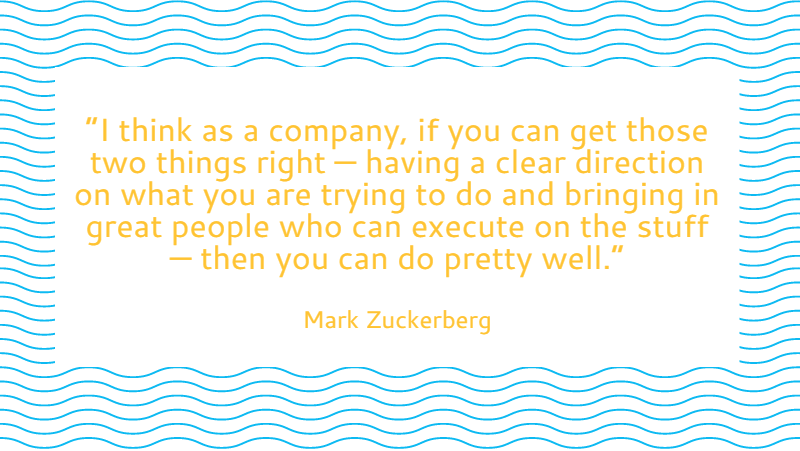When a CEO is managing a whole organization, it’s often perceived as one of the hardest jobs ever. While this statement is undoubtedly true, what most people do wrong is that they think of the wrong aspects of a CEO’s job when claiming it is hard.
The on-paper job responsibilities of a CEO aren’t that bad. Surely, managing clients, developing a business strategy, negating risks and taking advantage of opportunities are all important and complex to do, but most of those come with experience.
But the thing is, a CEO’s real job is mostly about leadership and the most important part about leadership, among other things, is the ability to communicate and manage dozens (even hundreds) of people under your command and lead them to victory.
“I’m responsible for this company. I stand behind the results. I know the details, and I think the CEO has to be the moral leader of the company, ... I think high standards are good, but let’s not anybody be confused, it’s about performance with integrity. That’s what you have to do.” – Jeffrey Immelt, CEO of General Electric
Now that’s something that is a lot harder to come by, and while some aspects of proper leadership and communication come from within (genetics guys), there are a number of things that every CEO can learn to do to make his or her leadership strategies more efficient.
1. Leading vs management
It’s important to understand the difference between leadership and management. A lot of people think of them as almost the same thing, but in reality, they are really far from each other.
A manager oversees the work of people under his or her command and makes sure that everything is proceeding smoothly. However, when faced with any hardships that exceed their level of competency, it’s not up to them to ultimately decide on how to proceed: They turn to their leaders for counsel.
In his speech about leadership and motivation, Simon Sinek, leadership expert and author of “Start With Why: How Great Leaders Inspire Everyone to Take Action” explains the important link between understanding people and understanding business. That’s the approach every CEO should be looking for.
This is exactly what you need to be for your team. As a CEO, you shouldn’t be there to manage the work of your employees – you have your managers doing the exact same thing. You shouldn’t be managing your managers either – they should know what to do themselves. What you need to do, is be that wise old man, who carries the knowledge of ancient wisdom and can offer a piece of valuable advice in any situation.
In our ever-changing society, the most powerful and enduring brands are build from the heart and wisdom. They are stronger because they are built with human spirit, not just an ad campaign. – Howard Schultz, CEO of Starbucks
Sometimes leaders are ruthless, sometimes – kind and caring. Develop a mix of both personalities, but make sure that you always keep on leading, not just telling your guys what to do and checking whether it’s done.
2. Plant the seed of leadership in your managers
As much as you would like to, or as good as you may be at leading people, you simply can’t do it alone. As your team and company grows, you will need more leaders (more copies of yourself) to ease your job and the more autonomy they can be trusted with, the better it’s going to be for you in the long run.
This is exactly why you want to invest into those managers who have the ability to create, plan and execute their own vision (as long as that vision fits the overall company vision). Inspiring enthusiasm and excitement in employees, regardless of their position in the company, basically means assigning more responsibility, granting autonomy (within reasonable levels) and letting them solve problems in their own way.
“I think as a company, if you can get those two things right – having a clear direction on what you are trying to do and bringing in great people who can execute on the stuff – then you can do pretty well.” – Mark Zuckerberg

3. Understand your industry’s shifting market conditions
CEOs that never fully understand or ignore the opportunities that arise in their industry and market can never hope to succeed in the fierce competitive environment of today.
One of the important marks of being a true leader is to identify, recognize and take advantage of the ever shifting market conditions in your industry and act accordingly, to ensure future business success.
“Leadership sets the tone and conditions. If you get the conditions right, the organization thrives.” – Simon Sinek
When somebody finds a breakthrough way of doing things in your industry and all you do is copy the approach (even with slight changes to fit your personal situation) that’s nothing more than being a mere copycat. Everybody can follow that one guy, but to be that one guy is what really matters.
Don’t be afraid to take calculated risks with your initiatives. When there is something new coming up, you can’t know for sure whether it’s the best approach, but then, you will never know until you give it a try.
As an old English proverb says “A man who makes no mistakes, accomplishes nothing.”
4. Never leave the slightest trouble go unnoticed
A true leader should always be able to spot even the smallest trouble and address each and every one of them. Again, this shouldn’t be confused with micromanagement: the troubles that we are talking about do not concern missed deadlines or incomplete tasks – that’s management’s prerogative.
What we are talking about is attention to detail when it comes to dealing with different employees and ensuring that they feel comfortable under your command. Being approachable, open to new ideas, change welcoming when necessary, simple and caring is what matters in a great leader. Never let your employees feel that they are on their own on something (even if they are!) and ensure that they know you got their back.
“Remember, man does not live on bread alone: sometimes he needs a little buttering up.” – John C. Maxwell
These four leadership strategies are a small fraction of what a great CEO represents for his or her people. While there is a lot more to the story, these factors are essential and a great start to ensure that your company at least got all the tools needed to succeed.
On a final note, it’s important to remember that every company is different and requires a different approach on almost all levels. You will have to develop your own, unique leadership techniques to complement those mentioned above, to really create the atmosphere and attitude needed to make your company great.
Sky vector designed by Freepik
Follow us


